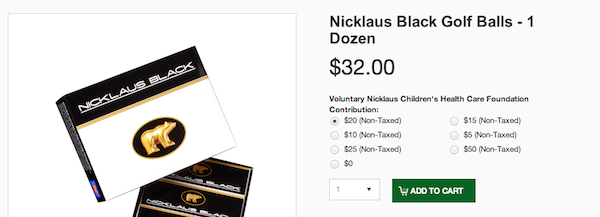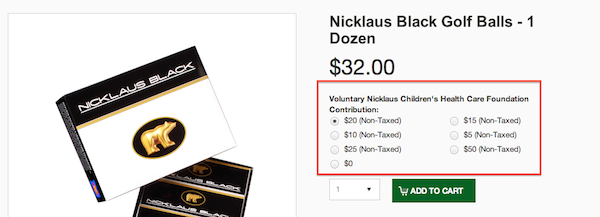I’m a golf fan.
I play golf and can hit some pretty good shots, but I’m nothing like the pros you see on TV.
Heck, I’ve seen guys on the range that can hit the ball like pros. The trick is they can make the ball do what they want to do. They can curve it both ways (when they actually want to) and have the mental acuity to get the ball in the hole.
The game is challenging and it can make you crazy, but I love it.
Jack Nicklaus Golf Balls
Recently, an announcement in the golf world came from one of golf’s greatest legends: Jack Nicklaus.
Jack had finally released a set of golf balls under his Nicklaus brand.
The Nicklaus brand has been around for a while. They make all the usual things like clubs, bags, apparel and more. Those things seem to do all right, but they’re not at the same level as bigger brands in the golfing world.
Jack is more known for his course design these days along with his incredibly playing legacy.
But perhaps golf balls will be something special for the company.
An Interesting Upsell Strategy
Out of curiosity I went to Nicklaus.com store to learn more about the new golf balls. The first thing that caught my eye on the product detail page was the unique upsell strategy.
Here is a screenshot:

Can you see what I’m talking about?
Right there above the Add To Cart button are pre-selected options for giving to Jack’s charity:

With each purchase of golf balls you pay $32 + $20 that will go to charity. That brings the balls in-line with other top of the line balls in the market.
You can pay more or less to the charity if you choose.
This is a great upsell strategy. Jack is doing it for charity, but the location of the upsell on the page makes it very effective I would think.
The only other place I’ve seen this type of upsell strategy has been on Go Daddy. That company gets fairly aggressive and confusion with upselling as you go through the checkout process.
What I like about the Nicklaus strategy is that it’s subtler, but it’s not sneaky. You know what you’re buying if you put the item in your cart.
When looking at this I think it can work great for most ecommerce companies and there can even be a few variations to improve effectiveness.
A Single Upsell Option
Upselling usually comes down to simply asking your customer: Would you also like to purchase this item?
Why do some companies do better on upselling than others? They ask.
The Nicklaus example is interesting and there are a lot of options. I think that approach makes sense because the upselling is for charity.
When you’re upselling products, I think one option might be better.
Pair your new shirt with this season’s most popular scarf!
Peer Pressure
Peer pressure is strong on the playground and perhaps just as strong in other areas of life, even for adults.
This strategy can be tricky, but if you can pull it off you can increase your sales. I got the idea from a video on TED where the founders of a software product teamed with energy companies to get people to conserve energy.
To do that, the team used peer pressure. They would deliver bills complete with “Neighbor Stats” showing how well each house did on energy compared to the neighbors.
The way to do this with upselling is to say something like: Customers that purchased this item also purchased this item.
If that sounds familiar, it’s because Amazon has used it for years in various locations on their site.
The Nicklaus campaign might increase donations by saying that customers who donate give an average of $20. When people see that number they’ll want to at least match it. And if they’re competitive they’ll want to beat it with $25, $30 or maybe even $100.
Final Thoughts
Upselling isn’t the biggest sales generator for many businesses, but it’s not money you want to turn away. If you can make your customers happy by giving them more of the things they need or want then you’re doing your job and making money.
Try the upselling process that Nicklaus and others are using. You should see an uptick in your upsells.




